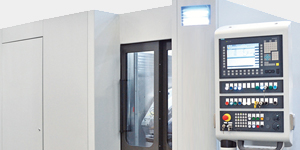The basics of magnetic particle inspection
Magnetic particle inspection is a technique that is commonly used for ferromagnetic alloys for detecting surface and subsurface discontinuities. This method is extensively used...
Benefits of liquid penetrant inspection
Dye penetrant inspection is one of the most widely used non-destructive inspection techniques used. It is useful for a wide variety of product applications...
Introduction to nondestructive testing
Nondestructive testing (NDT) is an interdisciplinary science that uses many different methods to evaluate the properties of metals, parts, or assemblies without causing damage...
Fracture mechanics and fatigue crack growth
In the last article, we talked about fracture mechanics, and the method of fracture toughness testing using fracture mechanics. In this article, we are...
Back to basics – Fracture toughness testing
In previous articles, we have discussed the many different types of mechanical testing methods and requirements. While some of the test methods have application...
Back to basics – Toughness testing of material
In the last series of articles, we discussed hardness testing and tensile testing. In these applications, the loading is a static load over a...
Back to basics: Mechanical testing – the tensile test
In the previous article, we discussed hardness testing, and the various methods of hardness testing were illustrated. In this article we discuss the tensile...
Back to basics: Hardness testing, Part 2
In last month’s Hot Seat article, we began a discussion on the various methods of mechanical property testing. Overall, we are going to discuss...
Back to basics: Hardness testing, Part 1
In a series of Hot Seat articles, we are going to discuss the various methods of mechanical property testing. We will be covering hardness...
Four basic types of fracture mechanisms: Part II
In the previous article, we discussed the fracture surfaces that are apparent for ductile or overload type fractures, and the fractures that occur with...
Four basic types of fracture mechanisms
When a component fails, the fracture surface of the broken component can tell a great deal regarding the mechanism of failure. It can often...
Cost, cleanliness, carbon footprint affect quenchant
Vegetable oils are seeing increased interest as quenchants for steel because of low carbon footprint, a renewable resource, and the ability to reclaim/recycle into...
Quench system monitoring requirements in AMS 2759G
AMS 2759G Heat Treatment of Steel Parts, General Requirements was adopted April 23, 2019. This important aerospace specification governs the heat treatment of...
Reclamation and recycling of quench oil
Because of the cost, many captive and commercial heat treaters are looking at reclaiming or recycling their quench oil as a method of saving...
Back to basics with tempering (Part II)
After a part has been austenitized and quenched, it must be tempered. As was discussed previously , the purpose of tempering is to relieve...
Back to basics: The mechanism of quenching
Regardless of the product, it is likely that it is heat-treated and quenched. Engine components are heat-treated for wear and durability (Figure 1). Aircraft...
Back to basics: Austempering and its advantages
In the previous articles, we discussed the processes of quench and temp, and martempering. In quench and tempering, the part is heated to the...
Back to basics: Martempering to reduce distortion
In the previous article, we discussed the principle of quench and temper, which is arguably the most common type of steel heat-treating. In this...
Back to basics: Quenching, tempering as heat treatments
This article describes the most common type of heat treatment of steel. This includes austenitizing, quenching, and tempering. In this process, the part is...
Getting back to basics with tempering
Once a part has been quenched, it must be tempered. This accomplishes two things: First, it relieves the thermal and transformational stresses from quenching....


















